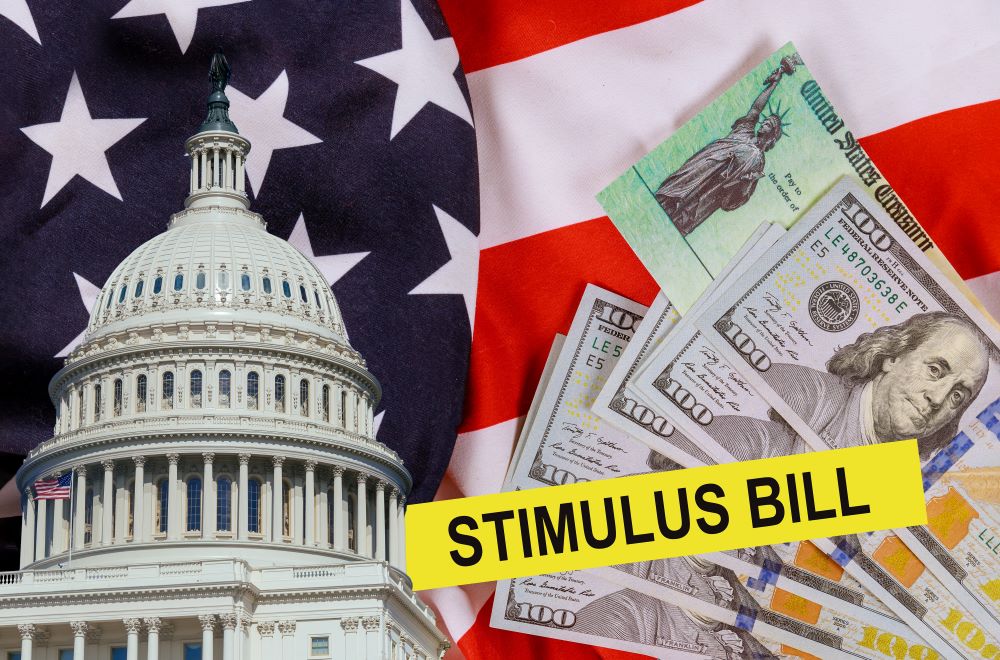COVID-19 Relief Opportunities for Nonprofit Organizations

The COVID-19 pandemic has created new operational and financial challenges for many businesses, including nonprofit organizations. A recent study conducted by Independent Sector found that not only have revenues plummeted by 83%, but to manage 71% have had to cut programs and services. The natural result is an increase in employee furloughs, terminations, and layoffs. The Consolidated Appropriations Act, 2021, (CAA), which was signed into law by President Trump on December 27, 2020, offers much-needed relief to organizations, which includes among other things charitable giving incentives, and changes to the Paycheck Protection Program (PPP).
We have summarized the key aspects of the provisions intended to provide financial relief to eligible nonprofit organizations, including:
Paid Sick Leave Credits
The CAA did not extend the mandated paid sick leave provisions initially implemented as part of the Families First Coronavirus Response Act. However, it did extend through March 31, 2021, the refundable payroll tax credits for paid sick and family leave benefits that are voluntarily provided.
Charitable Contribution Incentives
It is no surprise that many tax-exempt entities are experiencing financial challenges, in part, because of reduced contributions from donors. From the study mentioned above, since the start of the pandemic, there has been a 53% reduction in individual giving. The CAA has extended the above-the-line deduction for charitable contributions to $300 per individual and $600 per couple in 2021 to help these organizations. Also, there was a one-year extension on the increased limits for taxpayers’ charitable contributions that itemize.
Employee Retention Tax Credit (ERTC)
The CAA extended the credit to include wages paid through July 1, 2021, and implemented other changes to increase the saving potential drastically.
- Gross Receipts Test –The test was changed to permit organizations to qualify to begin in the 2021 period when gross receipts are less than 80% compared against the same quarter in 2019.
- Credit Cap Increase – Under the prior rules, an organization could only claim the credit against $10,000 of qualified wages for all quarters capped at $5,000 per employee (50% of up to $10,000 in qualifying wages). The cap has been increased to $7,000 per employee (70% of up to $10,000 in qualifying wages) for any calendar quarter.
- Large Employer Threshold – The CAA expanded eligibility by allowing organizations with 500 full-time or fewer employees to claim the credit.
- PPP Loans – Now permits organizations that received a PPP loan to claim the credit on wages not paid with forgiven loan proceeds.
PPP Loans
The CAA also provided new funding for the PPP allowing the program to reopen with several modifications, including updated eligibility for first-time borrowers and a new second draw loan program. The expanded eligibility criteria allow certain 501(c)(6) organizations previously excluded to now apply. Other details include:
- First Draw Loans – Most of the same rules which governed the initial PPP remain in effect. However, the CAA expanded the list of forgivable expenses, including covered personal protective equipment, supplier costs, and certain property damage expenses. Also, a new one-page simplified forgiveness application will be introduced for loans of $150,000 or less.
- Second Draw Loans – These are available to organizations with 300 or fewer employees and experience a 25% or greater reduction in gross receipts in any quarter in 2020 as compared to the same quarter in 2019. A payroll driven calculation determines the total loan amount with a maximum of $2M.
It is important to note that gross receipts are defined for nonprofits as income received from contributions, gifts, grants, dues, assessments, gross sales, and any amounts received from the sales of assets and investment income from interest, dividends, rents, and royalties before any expenses are taken into account.
Contact Us
If you have any questions regarding the information outlined above or if your nonprofit organization needs assistance with a tax or audit-related issue, Klatzkin can help. For additional information, click here to contact us. We look forward to speaking with you soon.
©2021 Klatzkin & Company LLP. The above represents our best understanding and interpretation of the material covered as of this post’s date and does not constitute accounting, tax, or financial advice. Please consult your advisor concerning your specific situation.
